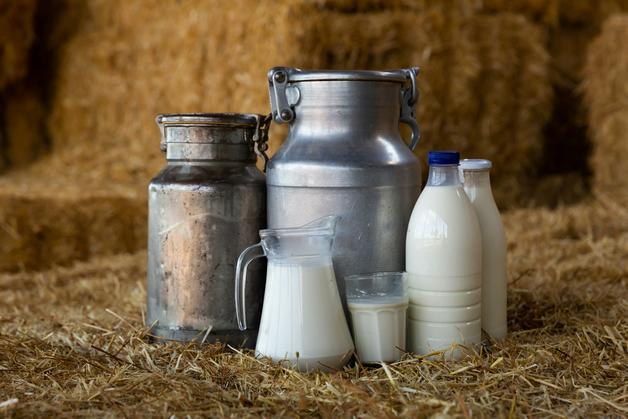Navigating life with a 5 month old baby can feel like embarking on a journey where excitement and uncertainty go hand in hand. Every day may open a new chapter—some mornings, you might witness your baby determinedly grasp their rattle, while evenings may bring persistent questions regarding nap times, teething fussiness, or your child’s sudden fascination with their hands. Why are sleep stretches so unpredictable? How do you know if that chubby little one is growing well? Parents often find themselves searching for answers, not just out of curiosity, but to ensure that every choice offers safety, comfort, and opportunity for their child. This journey, punctuated by first laughs, queries about weight, and moments of fatigue, brings both delight and challenge.
From growth spurts and cognitive leaps, to the fine-tuning of feeding schedules and interpreting new forms of babbling, the fifth month lays down tracks for future milestones. Questions swirl – should solids start now? What about tummy time frequency? Which signals truly suggest readiness for new experiences? Gain confidence in supporting every phase by understanding not just the ‘what’ but also the ‘why’. Below, you’ll find medically-informed answers, expert perspectives, and real solutions—balancing evidence, empathy, and clarity—designed for parents navigating the vibrant world of a 5 month old baby.
Key Developmental Milestones for a 5 Month Old Baby
Physical Growth and Strengthening
A 5 month old baby is a flurry of movement and subtle transformation. Look closely: neck control is more precise, the once-wobbly head now remains stable, and arms push away from the mat during tummy time, strengthening chest and shoulder muscles. At this age, witnessing a roll from tummy to back—or even a hesitant rock in the opposite direction—signals advanced motor progression. Some babies begin sitting with support, tiptoeing toward independence. These physical gymnastics foster bone density, neural coordination, and prime the stage for crawling in the coming months.
List of typical physical developments:
- Head held steady without support.
- Rolling over, initiating movement from tummy to back.
- Sitting with hands bracing in front (tripod position) or supported by a caregiver.
- Bouncing reflex when feet are placed on a firm surface.
- Vigorous reaching for toys, pulling objects to the mouth—triggering fresh explorations of grip, texture, and taste.
Fine Motor and Sensory Skill Refinement
A 5 month old baby is captivated by the world at their fingertips—quite literally. Tiny fists open, fingers splay, and grasping skills become ever-more refined. Observe how objects move from one hand to another, how wrists twist to scrutinize every facet of a bright toy. These moments are not just adorable; they reflect accelerated development in hand-eye coordination and the brain’s rapid sensory integration.
Providing your baby with textured rattles, soft teething rings, or easy-to-hold books encourages both tactile curiosity and myelination (the protective sheath forming around nerves in the brain and spine, supporting rapid learning). If your baby shakes, bangs, or mouths every toy—rest assured, this is sensory learning at its finest.
Cognitive Leap: Faces, Names, and Cause-Effect
The fifth month is marked by leaps not only in movement, but also in understanding. A 5 month old baby tunes in to familiar faces, voice rhythms, and recurring patterns. Sometimes, a name called across the room will earn an attentive head-turn—a quiet win for social connection and early language mapping.
Consider playing peekaboo—your baby’s delight isn’t just for fun. Games like these introduce the concept of object permanence (the idea that things exist even when hidden). Rattles that make noise when shaken cement the basics of cause and effect, teaching that actions have understandable consequences.
Key cognitive milestones:
- Visual tracking: Following moving objects with eyes, sometimes for several seconds at a stretch.
- Recognising caregivers by sight and sound, perhaps reserving the brightest smile for a loved familiar face.
- Predicting routines—showing excitement before bathtime or feedings.
Language and Communication: Early Chatter
Listen closely to a 5 month old baby, and you’ll notice an orchestra of sounds—cooing, gurgling, and even new bursts of laughter. Changes in vocal pitch and babbling such as “ba-ba,” “ga-ga,” or “ma-ma” (though not always intentional) point to burgeoning communication skills.
Regular dialogue—naming items, singing nursery rhymes, or simply mirroring your baby’s sounds—is vital. It boosts auditory neural connections and laying the foundation for expressive language. Maintaining eye contact when talking acts as an emotional anchor and strengthens social bonds.
Social and Emotional Interaction
Connection intensifies during the fifth month—expect genuine smiles, spontaneous giggles, or even the beginnings of stranger anxiety. A 5 month old baby may reach for you in unfamiliar settings, or display excitement when greeted by siblings. Emotional signals become clearer: laughter in response to a funny face, arms lifted for a comforting cuddle, or a furrowed brow when routines are disturbed.
This evolving social awareness is a direct outcome of maturing neural networks in the brain, and responding with warmth and sensitivity supports emotional intelligence down the line.
Everyday Care: Hygiene, Comfort, and Safety
Diapering and Bathing
With a 5 month old baby, diaper changes remain a frequent reality—optimally every 2-3 hours, or immediately when soiled, to guard against diaper rash. Use fragrance-free wipes, a light barrier cream if needed, and give skin time to breathe between changes. Aim for baths 2-3 times weekly with tepid water—excessive bathing can strip the skin of its natural defenses.
Creating a Safe Space: Babyproofing Your Home
As the drive to roll and explore intensifies, hazard prevention surges to the top of your list. For a mobile 5 month old baby:
- Cover electrical sockets.
- Secure loose cords.
- Anchor unsteady furniture.
- Remove any small items within grasping range—choking prevention is paramount.
A soft play mat offers both safety and a tactile playground for hands and knees, while the sleeping environment should remain clear—no loose bedding, pillows, or plushies in the crib to reduce SIDS (Sudden Infant Death Syndrome) risks.
Sleep Patterns, Regressions, and Building Healthy Routines
Sleep Needs and Routine Structuring
A 5 month old baby typically requires 12–16 hours of sleep in a 24-hour period, split across night stretches and multiple naps. At this age, many parents begin to observe (or hope for!) slightly longer nighttime blocks—sometimes 6–8 hours, though interruptions are perfectly in line with developmental needs.
- Daytime: usually 2–3 naps, length and schedule may vary.
- Nighttime: a gradual move towards consolidated sleep, broken by feeding or soothing needs.
Calming Bedtime Routines and Night Wakings
Repetition and simplicity often deliver the best results. A bedtime routine might include a warm bath, gentle lullabies, and dim lighting, signalling to your baby that sleep is approaching.
Tip: Gently place a 5 month old baby in their crib when drowsy but awake, building capacity for self-soothing rather than full sleep dependency on rocking or feeding. If your child wakes overnight, calm but minimal interactions can help establish longer sleep stretches. Resist introducing comfort objects that are not safe for sleep—no stuffed toys or loose blankets, especially since rolling has begun.
Temporary sleep regressions, often linked to teething or bursts in development, challenge even the most patient caregivers. These are usually brief and resolve with time, consistent reassurance, and steady routines.
Feeding and Nutrition: The Journey of Nourishment
Breastfeeding, Formula, and Signs of Readiness
A 5 month old baby often thrives on exclusive breast milk or infant formula, generally consuming 24–32 ounces in a 24-hour period. Feeds typically occur every 3–4 hours. The nutritional concentration of breast milk adapts to your baby’s needs—rich in antibodies, enzymes, and fats essential for rapid growth phases.
This month, interest in solid foods might emerge—staring at your plate, reaching out, or mimicking chewing. Before introducing solids, check for:
- Ability to sit with minimal support.
- Good head control.
- Tongue-thrust reflex diminishing (not immediately pushing food out).
The Solid Food Question: Timing and Approach
Medical consensus often encourages a slow and thoughtful approach to solids, ideally between 5-6 months, after discussion with your pediatrician. When you start, single-ingredient purees (iron-fortified cereal, well-cooked vegetables, or mashed fruit) are ideal. Offer each new food alone for 3–5 days to monitor for allergies: hives, vomiting, swelling, or sudden changes in behaviour may signal a reaction.
Introduction of potential allergens—small, supervised quantities of egg, peanut, or fish—has shown, in numerous studies, to help mitigate later allergy risks. Avoid any salt, sugar, or honey. Babies must always eat upright and only with a caregiver present.
Practical Feeding Pointers
- Use a silicone-tipped spoon—gentler on delicate gums.
- Allow your 5 month old baby to explore (and occasionally refuse) new sources of nourishment. Refusal is common and not a setback.
- Always trust medical guidance if you’re unsure about growth, hydration, or ongoing feeding concerns.
Activities and Play: Stimulating Body and Mind
Tummy Time, Sensory Play, and Movement Games
For a 5 month old baby, tummy time remains the gold standard for developing strength. Increase engagement by using mirrors, colorful mats, or placing favourite toys just out of reach. This not only promotes upper body power but also fosters visual perception and cognitive mapping.
Encourage your baby’s drive to roll, wiggle, and grasp—every movement reinforces neuronal circuits and muscular balance. Offer teething rings, soft books, and rattles to fuel both motor development and tactile exploration.
Language and Social Play
Build language skills with conversational turns—even if the replies are just babbles—along with lively singalongs and simple question games. Show contrasting facial expressions, use everyday objects to teach new words, and enjoy the social blossoming that comes from back-and-forth exchange.
Peekaboo and pat-a-cake games lay early groundwork for memory and emotional regulation; don’t underestimate those belly laughs—they are building blocks for well-being.
Outdoor Exploration
Short outdoor excursions, listening to birds, smelling flowers, and observing changing light—all of these enliven a 5 month old baby’s curiosity. Alternating between movement and calm, busy and quiet, sets a gentle rhythm for the day and guards against overstimulation.
Health: Teething, Tummy Troubles, and Warning Signs
Teething and Comfort Measures
For many, teething begins around five months. Noticing increased drool, gum rubbing, or irritability? These classic signs can be soothed by cool teething rings, chilled (not frozen) washcloths, or the careful use of a clean finger for gum massage. Do wipe away excess drool to prevent chin rash.
Spit-Up, Constipation, and Diarrhoea
- Spit-up is frequently seen and seldom dangerous if growth is ongoing and no distress is apparent. Persisting vomiting, poor weight gain, or repeated discomfort warrants pediatric assessment.
- Constipation is characterized by firm, infrequent stools and obvious discomfort. Fluid intake adjustments or a gentle tummy rub may help.
- Diarrhoea can be a response to infection or dietary introduction—hydration is vital. Watch for lethargy, refusal to feed, or ongoing changes, which call for urgent medical advice.
Fever and Medical Red Flags
Fever over 100.4°F, persistent crying, reduced feeding, or difficulty breathing requires immediate medical evaluation. Likewise, absence of usual milestones—no reaching, no social smiles, lack of response to sounds—can be indicators to discuss promptly with your pediatrician.
Safety and Newfound Mobility
Every newfound movement carries new risk. For the ever-moving 5 month old baby, maintain vigilance:
- Remove unstable furniture, dangling cords, and small items.
- Never leave a baby unsupervised on a high surface.
- Lower the crib mattress as sitting emerges.
- Rear-facing car seats are essential for safe travel at this stage.
Parental Well-Being: The Heart of the Journey
Parenting a 5 month old baby weaves moments of contentment with fatigue, joy with self-doubt. Prioritize your rest—nap when your baby does if possible. Eat balanced meals, seek connection with other parents, and avoid self-critique on hard days. Supporting your own health is not a luxury; it strengthens your entire family’s resilience.
When in doubt, consult your healthcare provider. Professionals exist to partner with you through every transition, every concern—your observations are invaluable.
Key Takeaways
- Each 5 month old baby follows their own developmental path; milestones serve as indicators, not deadlines.
- Providing regular sleep, balanced feeding, safe spaces, and varied activities enhances both physical and cognitive advancement.
- Noticing and nurturing curiosity—through play, stories, and interaction—fuels growth and family connection.
- Early attention to signs of illness or skipped milestones allows swift, appropriate intervention.
- Professional support, peer advice, and digital health resources offer ongoing help—explore options like the application Heloa for tailored health tips and free child health questionnaires.
Questions Parents Ask
Is it normal for a 5 month old baby to not roll over yet?
Yes—all babies master physical skills at a unique pace. Rolling over may occur anywhere between 4 to 7 months; enjoying tummy time and showing interest in movement are reassuring signs. Floor play, free movement, and gentle encouragement are the best support while waiting for this milestone.
How much should a 5 month old baby weigh?
Healthy weight range varies, typically landing between 6 and 8 kilograms (13–17 pounds), though genetics, feeding choices, and body type all play a part. If your child is alert, happy after feeds, and following their growth curve, these are excellent markers of progress. Any persistent worries about appetite or changes in weight deserve a consultation with your pediatrician.
Should my 5 month old baby be sitting up on their own?
Most babies gain independent sitting skills after the sixth month, although sitting supported or for brief moments surrounded by pillows is very common at five months. This milestone requires coordinated head, neck, and core muscle strength and can take time. Practice, patience, and plenty of floor play help build these abilities, with your baby setting the tempo.
Let each day with your 5 month old baby be filled with small discoveries—new skills, shared laughter, and confidence in each step forward.
Further reading:









